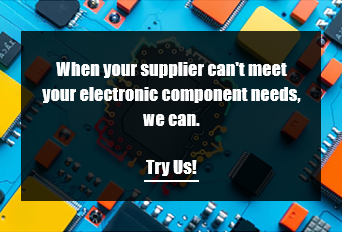The electronic components supply chain refers to the network of processes, organizations, and resources involved in the production, distribution, and delivery of electronic components used in various products, including consumer electronics, automotive systems, industrial equipment, and more. This supply chain is complex and global, often involving multiple stages and participants from raw material extraction to the final product delivery.
Key Stages in the Electronic Components Supply Chain:
1. Raw Material Sourcing:
- The supply chain begins with sourcing raw materials, such as silicon, copper, and rare earth elements, which are essential for manufacturing electronic components like semiconductors, capacitors, and resistors.
2. Component Manufacturing:
- Raw materials are processed and used to manufacture electronic components. This stage includes semiconductor fabrication, assembly of integrated circuits (ICs), production of passive components (e.g., resistors, capacitors), and other critical electronic parts.
3. Testing and Quality Control:
- After manufacturing, components undergo rigorous testing to ensure they meet quality and performance standards. Quality control is crucial as defective components can lead to failures in the final products.
4. Distribution and Logistics:
- Once manufactured and tested, components are distributed to various locations where they are needed. This stage involves warehousing, inventory management, and transportation logistics to ensure timely delivery to manufacturers and assembly plants.
5. Original Equipment Manufacturers (OEMs) and Contract Manufacturers:
- OEMs and contract manufacturers assemble the final products, such as smartphones, laptops, and industrial machinery, using the electronic components sourced from different suppliers.
6. End Product Manufacturing:
- In this stage, components are integrated into the final products, which are then tested, packaged, and prepared for distribution to retailers or directly to consumers.
7. Distribution to End Users:
- The finished products are distributed to retailers, wholesalers, or directly to consumers through various channels, including online and brick-and-mortar stores.
8. Aftermarket Services and Recycling:
- After the product reaches the end user, there may be additional services such as maintenance, repair, and warranty handling. Eventually, when products reach the end of their life cycle, they are recycled, and some components may re-enter the supply chain as raw materials.
Challenges in the Electronic Components Supply Chain:
- Globalization: The supply chain is highly globalized, with different stages often taking place in different countries, making it vulnerable to geopolitical issues, tariffs, and trade restrictions.
- Supply Chain Disruptions: Events like natural disasters, pandemics, or factory shutdowns can significantly impact the supply chain, leading to shortages or delays.
- Complexity and Dependence: The reliance on specialized suppliers for key components, like semiconductors, adds complexity and risk, as bottlenecks at any stage can disrupt the entire supply chain.
- Counterfeit Components: The risk of counterfeit components entering the supply chain poses a significant threat to the integrity and reliability of electronic products.
What is the Electronic Components Supply Chain

Minnie Li Published August 26, 2024

Trending
Top 10 Chip Design Companies in Mainland China
Aluminum Electrolytic Capacitor Selection Factors
Sensor Selection Guide: Important Factors to Consider
High Costs and Low Profit Margins Lead Intel to Lay Off 15,000 Employees
Performance Characteristics of Programmable Logic Devices(PLDs)
Precautions for Using Thyristors
STM32 Series Microcontrollers: The Top Choice for High-Quality White Goods Embedded Development
Maxim Integrated Product Naming Rules
View All








